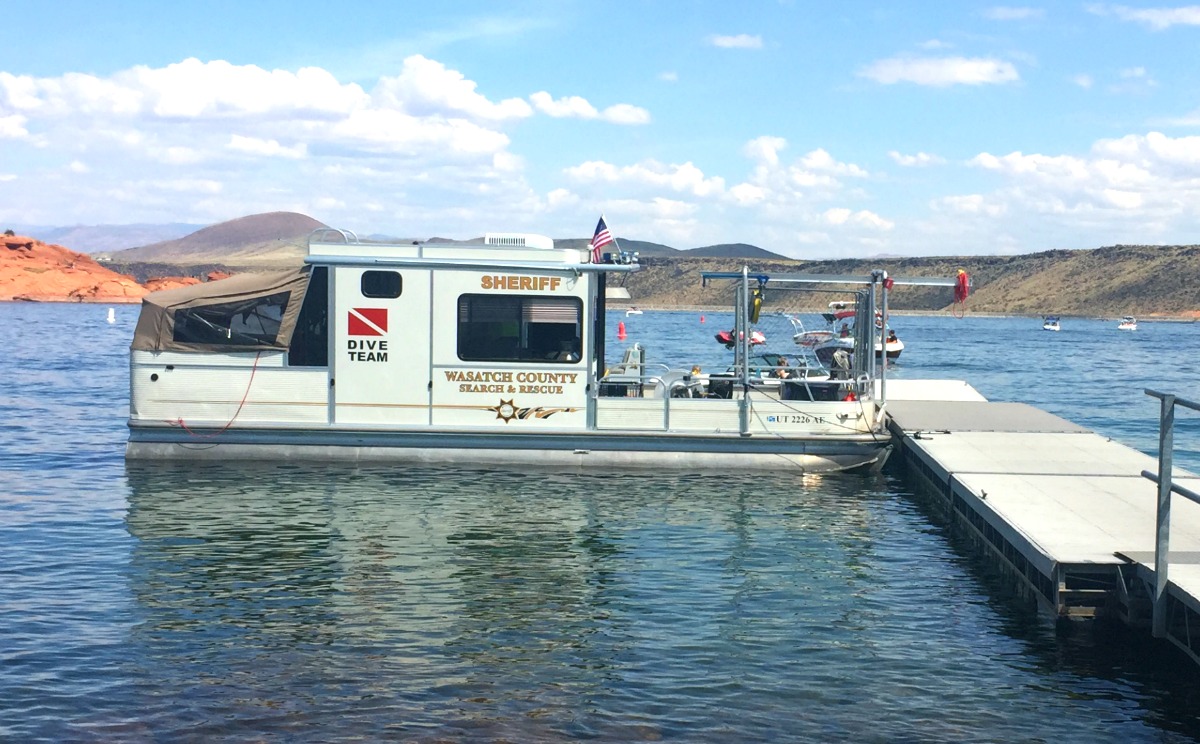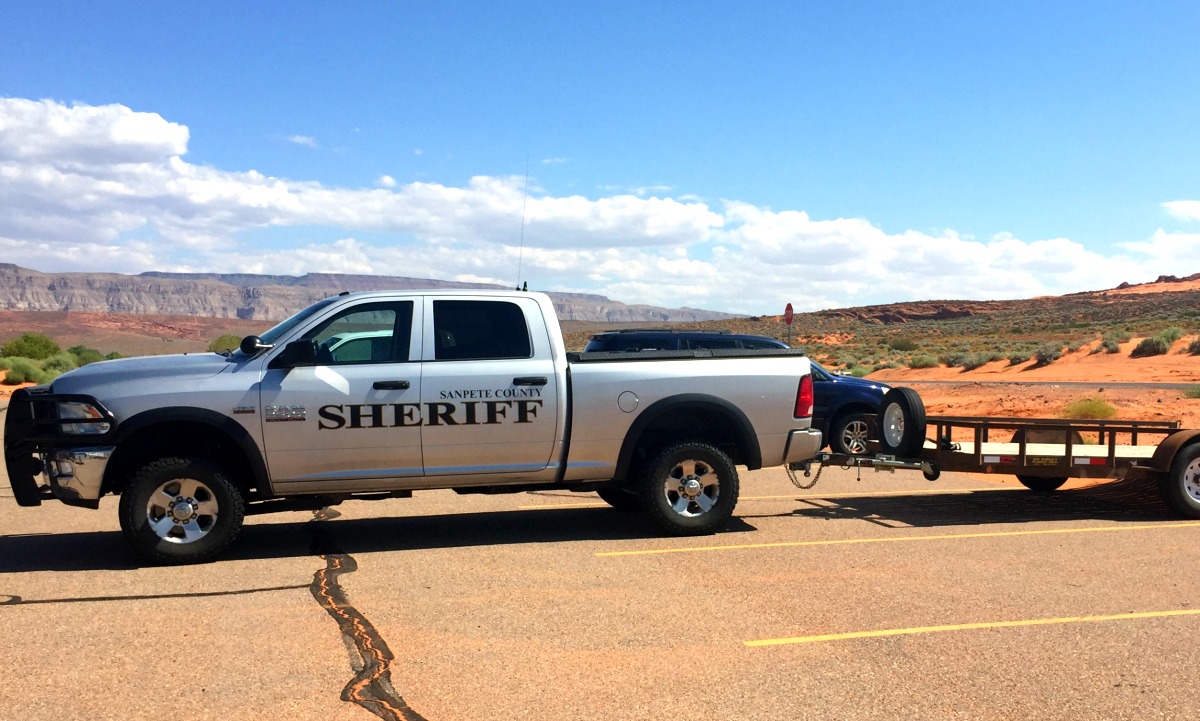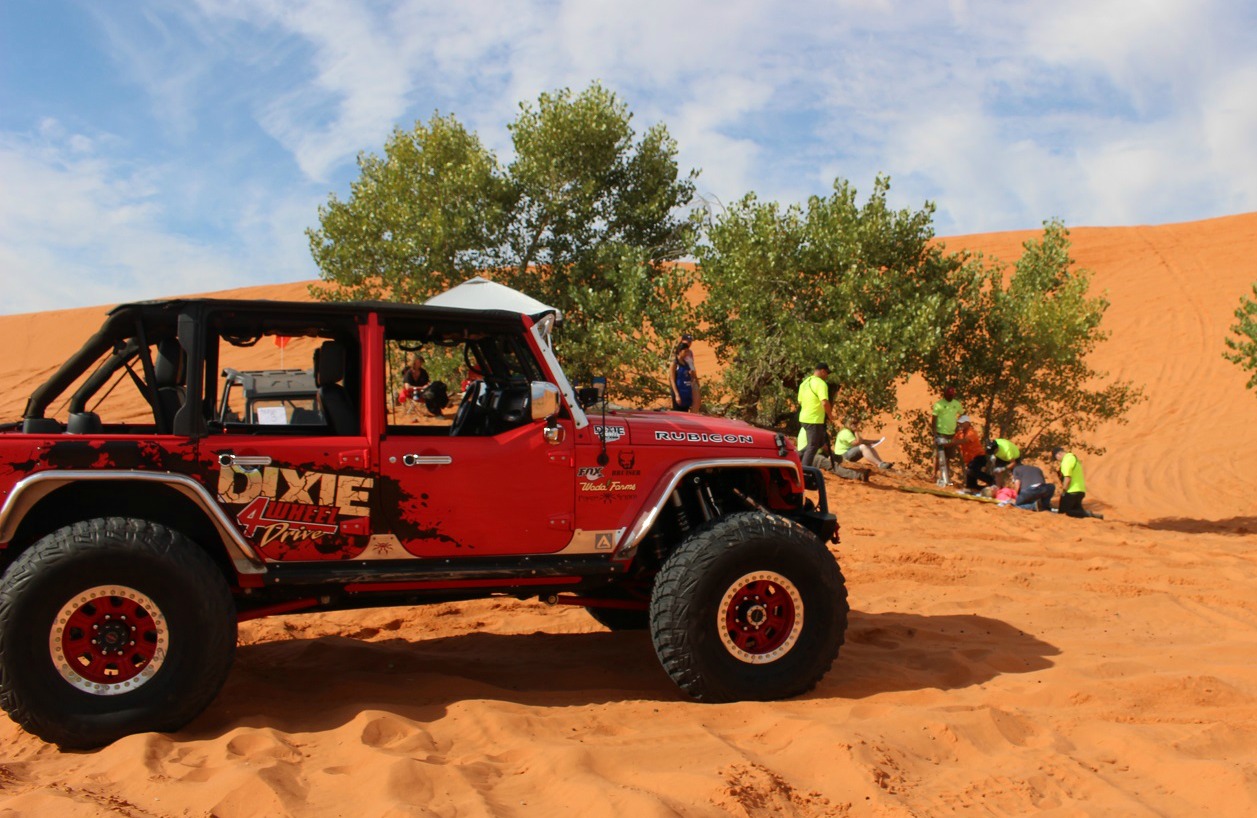SAND HOLLOW STATE PARK — Search and rescue teams from across Utah and one from Arizona met at Sand Hollow State Park Saturday to begin a two-day training that included a variety of mock exercises and several real life incidents.

Search and rescue teams in Utah are run under the umbrella of the county sheriff’s offices, and while some deputies serve on the search and rescue teams, many of the team members are volunteers.
The Washington County Search and Rescue team is currently composed of 66 members; 65 of them are volunteers. The only paid member of the team is Deputy Darrell Cashin, who serves as the Washington County Sheriff’s Office Search and Rescue team liaison.
The weekend practice schedule included ground rescue team instruction and dive team exercises.
For ground rescue operations, the training included GPS training, high-angle rope rescue training, and medical rescues, among other exercises.
“This annual training is part of the Utah Sheriff’s Association Conference coming up Monday,” Washington County Sheriff Cory Pulsipher said.

The scenarios varied in their levels of complexity; some were fairly simple, while others required a rope rescue team and a call to Intermountain Life Fight.
Exercises required participants to find mock victims based on GPS coordinates. Other exercises involved high-angle rope rescue training, medical rescues and other scenarios.
Each team headed out on all-terrain vehicles and other off-highway vehicles toward the sand dunes with what medical supplies they could carry and, in some cases, limited information about what awaited them.
Adding a twist to one of the ground scenarios this year was the mock rescue of a deaf hiker which presented unique challenges that require different skill-sets, such as man-tracking, footprints and other methods used to locate an individual who is lost but cannot hear anyone yelling their name or the sound of a helicopter.
“It throws them some curve balls and gives them the opportunity to do things they are not normally training for,” Pulsipher said, “and yet these are scenarios that we might actually be dealing with as we move forward.”

Dive training involved underwater exercises simulating boat rescues, body and evidence recovery and diver safety.
Search and rescue divers for Washington County have to be certified divers, and dive instructors have to be certified by the Utah Highway Patrol Public Safety Dive Team.
Lt. Michael Beets with the Mohave County Sheriff’s Office brought eight members of his team to the training from all three units, including the Lake Havasu Unit, the Northern Strip Unit and the Bullhead Unit.
“Mohave County Search and Rescue is responsible for covering the fifth largest county in the United States,” Beets said.
The teams go out on approximately 60 rescues a year, Beets said, and this year is a particularly busy year for them, which makes the statewide training at Sand Hollow invaluable. Sunday the teams from Mohave had just completed a maps and compass training and attended a leadership course.

Beets said cooperation between the Washington County and Mohave County Search and Rescue has been very helpful.
A rescue call out in the northern section of the Arizona Strip would take their Havasu team approximately 5 hours before they arrived on scene, Beets said, and the Washington County teams can get there much quicker.
Additionally, Washington County rescuers are able to initiate a search while the Arizona team is en route, which narrows down the search area considerably, he said. In some instances, they are also able to locate an individual and stabilize them until Mohave County rescuers can get there.
“Working together with Washington County on some of these northern Arizona Strip rescues has been pretty amazing,” Beets said. “This has been a wonderful experience to be at this training; it’s good for our people and we’d like to invite Washington County to one of our search and rescue training conferences in the future.”
An Intermountain Life Flight helicopter and flight crew participated in the two-day training and transported the “injured” during mock scenarios, as well as being available to bring in necessary supplies the search and rescue team may not have been able to convey.

The helicopter was called out on several real life incidents over the weekend, as well.
Pete Anderson, Intermountain Life Flight pilot, said that his favorite part of the job is “helping people out.”
“The variety of missions that we do, it keeps it interesting and I really like that,” Anderson added.
Bryce Thompson spent the weekend helping with transportation, making multiple trips up and down Sand Mountain transporting rescuers to the various exercises and mock rescues taking place. Thompson is a local that knows the area well and was able to get the teams to multiple staging areas scattered across the dunes.
Thompson is co-owner of Dixie 4-Wheel Drive, which teamed up with the Bureau of Land Management, Utah Public Lands Alliance and The Desert Rat to provide digital maps to visitors of Sand Hollow, outlining the off-road vehicle area that covers 15,000 acres.
Some of the county sheriff’s offices and search and rescue teams represented during Saturday’s training came from Iron, Sanpete, Tooele, Weber, Wasatch and Washington counties, along with the Mohave County Search and Rescue teams from Lake Havasu, Arizona. Also participating in the training were members of the Utah Highway Patrol Public Safety Dive Team, Hurricane Valley Fire District, Intermountain Life Flight helicopter out of St. George and Sand Hollow State Park rangers.
Click on photo to enlarge it, then use your left-right arrow keys to cycle through the gallery.
Washington County Serch and Rescue Dive Team boat during training at Sand Hollow State Park, Washington County, Utah, Sept. 16, 2017 | Photo by Ron Chaffin, St. George News Search and rescue programs from all over Utah participate in mock rescues at the annual two-day statewide search and rescue training held at Sand Hollow State Park, Washington County, Utah, Sept. 17, 2017 | Photo by Cody Blowers, St. George News Dixie 4-Wheel Drive volunteers at the annual two-day search and rescue training held at Sand Hollow State Park, Washington County, Utah, Sept. 17, 2017 | Photo by Cody Blowers, L to R: Steve Connolly, flight nurse, Ray Trujillo, paramedic, Judy Hestehave and Pete Anderson, pilot during two-day annual search and rescue training held at Sand Hollow State Park, Washington County, Utah, Sept. 17, 2017 | Photo by Cody Blowers, St. George Police Department participates in statewide search and rescue training held at Sand Hollow State Park, Washington County, Utah, Sept. 17, 2017 | Photo by Cody Blowers, St. George News Judy Hestehave was injured victim in mock rescue involving Intermountain Life Flight at annual two-day statewide search and rescue training held at Sand Hollow State Park, Washington County, Utah, Sept. 17, 2017 | Photo by Cody Blowers, St. George News Washington County Search and Rescue Steve Ikuda participates in the two-day training held at Sand Hollow State Park, Washington County, Utah, Sept. 17, 2017 | Photo by Cody Mock rescue exercises are performed at the annual two-day statewide search and rescue training held Saturday and Sunday at Sand Hollow State Park, Washington County, Utah, Sept. 17, 2017 | Photo by Cody Blowers, St. George News Tooele County Search and Rescue attend annual two-day training at Sand Hollow State Park, Washington County, Utah, Sept. 17, 2017 | Photo by Cody Blowers, St. George News Washington County Search and Rescue trailer at annual Sand Hollow State Park, Washington County, Utah, Sept. 17, 2017 | Photo by Cody Blowers, St. George News









Email: [email protected]
Twitter: @STGnews
Copyright St. George News, SaintGeorgeUtah.com LLC, 2017, all rights reserved.


It is just fantastic that these agencies are able to work together in mutual aid situations!
Being the dinosaur that I am, I can remember the days when there was not only no interagency cooperation, but tremendous egos and jealousy that kept some agencies practically at war with each other. Back then, chiefs and sheriff’s were in constant fear of losing their jobs, particularly if there were cross jurisdictional situations.
My hat is permanently raised to our public service agencies, officers and volunteers, whether LE, Fire, or EMS!
Washington county has the best search and rescue team! All search and rescue members are a very special type of person- something the Lord made.
We are fortunate living in an area where agencies are focused on the mission at hand. Cooperation is key to an effective outcome. We have that here indeed! As stated by DRT it was not always that way.
I am hoping that with the availability of lower cost drones, that the S&R teams figure out what part they can play in the efforts.
Helicopters are very expensive to deploy, and may not be readily available, so drones offer a low cost alternative to locate injured parties.